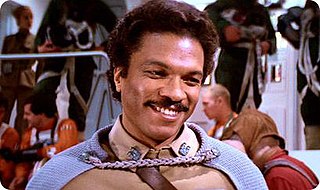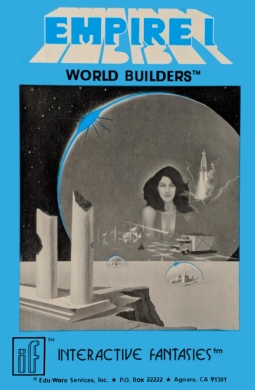
Exile is a series of role-playing video games created by Jeff Vogel of Spiderweb Software. They were released as shareware titles for Macintosh and Windows systems. Exile III was also ported to Linux by a third party. There were four games released in the series. All of the games were later revived in the Avernum series. Common to all games in the Exile series are 2D graphics and basic sound. The graphics in the first versions of Exile I and II had simple textures, colours and outlines, which were then replaced in later versions with Exile III's graphics. The games are designed to be non-linear and long in gameplay length.

Zork is a text adventure game first released in 1977 by developers Tim Anderson, Marc Blank, Bruce Daniels, and Dave Lebling for the PDP-10 mainframe computer. The original developers and others, as the company Infocom, expanded and split the game into three titles—Zork I: The Great Underground Empire, Zork II: The Wizard of Frobozz, and Zork III: The Dungeon Master—which were released commercially for a range of personal computers beginning in 1980. In Zork, the player explores the abandoned Great Underground Empire in search of treasure. The player moves between the game's hundreds of locations and interacts with objects by typing commands in natural language that the game interprets. The program acts as a narrator, describing the player's location and the results of the player's commands. It has been described as the most famous piece of interactive fiction.

LandoCalrissian is a fictional character in the Star Wars franchise. He is introduced in The Empire Strikes Back (1980) as a friend of Han Solo and the administrator of Cloud City on the planet Bespin. Prior to the events of the film, Lando made a career as a gambler, con artist, playboy, mining engineer, and businessman, and was the owner of the Millennium Falcon until losing the ship to Han in a bet. In the film, when Cloud City is threatened by the Galactic Empire, Lando reluctantly betrays Han to Darth Vader, but later helps Han's friends escape from the Empire. In Return of the Jedi (1983), after becoming a general in the Rebel Alliance, Lando helps rescue Han from Jabba the Hutt and leads the attack on the second Death Star.

Grand Admiral Thrawn is a fictional character in the Star Wars franchise. He first appeared in what came to be known as the Thrawn trilogy of novels (1991–1993) by Timothy Zahn. An Imperial military leader and a member of the Chiss race, Thrawn leads remnants of the scattered Galactic Empire in the aftermath of its fall.
An empire is a group of states or peoples under centralized rule.

Over one hundred video games based on the Star Wars franchise have been released, dating back to some of the earliest home consoles. Some are based directly on films while others rely heavily on the Star Wars Expanded Universe.

Star Wars: Rebel Assault II: The Hidden Empire is a 1995 video game developed by LucasArts. It is the sequel to Star Wars: Rebel Assault, set in the Star Wars expanded universe. It is played as a rail shooter; the player proceeds down predetermined paths, but has the ability to control aiming, shooting, and dodging. The player character, Rookie One, pilots ships such as a YT-1300 Corellian Transport, a B-wing, and a Y-wing, and encounters new enemy ships, including TIE Interceptors. They uncover, and eventually disable production of, a new TIE variant known as the TIE Phantom, which has the ability to cloak.

Heroes of Might and Magic III: Armageddon's Blade is the first of two expansion packs for the turn-based strategy game Heroes of Might and Magic III. It was developed by New World Computing for Microsoft Windows and released by The 3DO Company in 1999.

New World Computing, Inc. was an American video game developer and publisher founded in 1984 by Jon Van Caneghem, his wife, Michaela Van Caneghem, and Mark Caldwell. It was best known for its work on the Might and Magic role-playing video game series and its spin-offs, especially Heroes of Might and Magic. The company was purchased by and became a division of The 3DO Company on July 10, 1996 from NTN Communications, after NTN purchased New World Computing for $10 million in stock.

The music of the Star Wars franchise is composed and produced in conjunction with the development of the feature films, television series, and other merchandise within the epic space opera multimedia franchise created by George Lucas. The music for the primary feature films was written by John Williams. Williams' work on the series included the scores of nine feature films, a suite and several cues of thematic material for Solo and the theme music for the Galaxy's Edge Theme Park. These count among the most widely known and popular contributions to modern film music, and utilize a symphony orchestra and features an assortment of about fifty recurring musical themes to represent characters and other plot elements: one of the largest caches of themes in the history of film music.

David Mullich is an American game producer and designer. He created the 1980 adventure game The Prisoner, produced the 1995 adaptation I Have No Mouth, and I Must Scream, and developed Heroes of Might and Magic III and Heroes of Might and Magic IV.

Star Wars Rogue Squadron III: Rebel Strike is an action video game developed by Factor 5 and published by LucasArts for the GameCube. The game is set during the original Star Wars trilogy and recreates battles that take place during those films. The game follows Rogue Squadron, which, under the command of Luke Skywalker and Wedge Antilles, uses starfighters to engage and defeat the Galactic Empire.

Star Wars: TIE Fighter is a 1994 Star Wars space flight simulator and space combat video game, a sequel in the Star Wars: X-Wing series. It places the player in the role of an Imperial starfighter pilot during events that occur between The Empire Strikes Back and Return of the Jedi.
The Godfather is a trilogy of American crime films directed by Francis Ford Coppola inspired by the 1969 novel of the same name by Italian American author Mario Puzo. The films follow the trials of the fictional Italian American mafia Corleone family whose patriarch, Vito Corleone, rises to be a major figure in American organized crime. His youngest son, Michael Corleone, becomes his successor. The films were distributed by Paramount Pictures and released in 1972, 1974, and 1990. The series achieved success at the box office, with the films earning between $430 and $517 million worldwide. The Godfather and The Godfather Part II are both seen by many as two of the greatest films of all time. The series is heavily awarded, winning 9 out of 28 total Academy Award nominations.

Commander Keen in Goodbye, Galaxy is a two-part episodic side-scrolling platform video game developed by id Software and published by Apogee Software in 1991 for DOS. It consists of the fifth and sixth episodes of the Commander Keen series, though they are numbered as the fourth and fifth, as Commander Keen in Keen Dreams is not part of the main continuity. The game follows the titular Commander Keen, an eight-year-old child genius, as he first journeys through the Shadowlands to rescue the Gnosticenes so they may ask the Oracle how the Shikadi plan to destroy the galaxy, and then through the Shikadi's Armageddon Machine to stop them. The two episodes feature Keen running, jumping, and shooting through various levels while opposed by aliens, robots, and other hazards.

Empire I: World Builders is a 1981 video game for the Apple II published by Edu-Ware. It is the first game in the Empire trilogy, followed by Empire II: Interstellar Sharks (1982) and Empire III: Armageddon (1983).

Empire II: Interstellar Sharks is a 1982 video game for the Apple II published by Edu-Ware. It is the second game in the Empire trilogy, preceded by Empire I: World Builders (1981) and followed by Empire III: Armageddon (1983).

Threshold is a space-themed fixed shooter written by Warren Schwader and Ken Williams for the Apple II and published by On-Line Systems in 1981. Inspired by Sega's Astro Blaster arcade video game, Threshold introduces many enemy ship types and wave formations as the game progresses. Reviewers found the variety distinguished the game from the many similar shoot 'em ups.
















